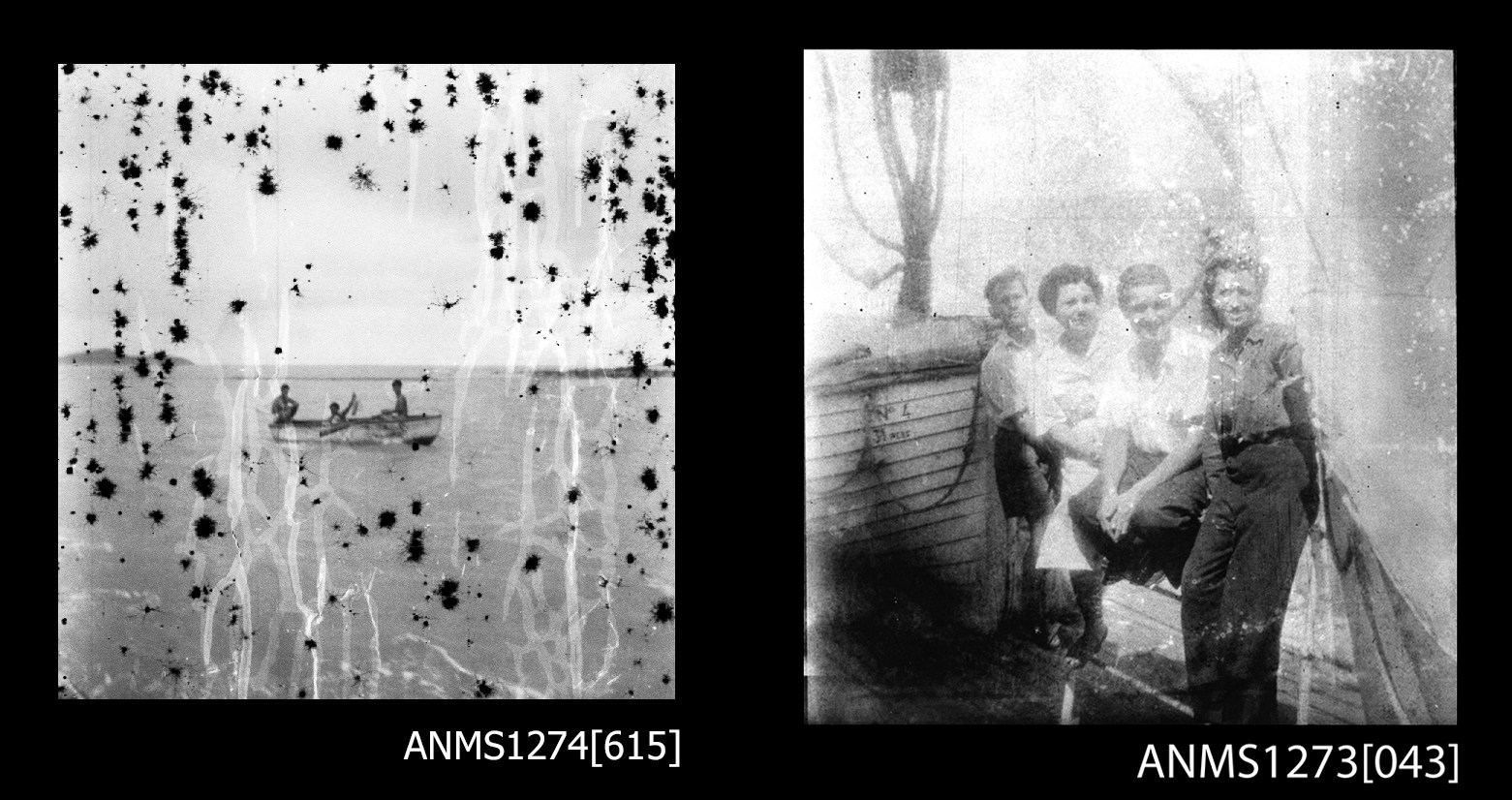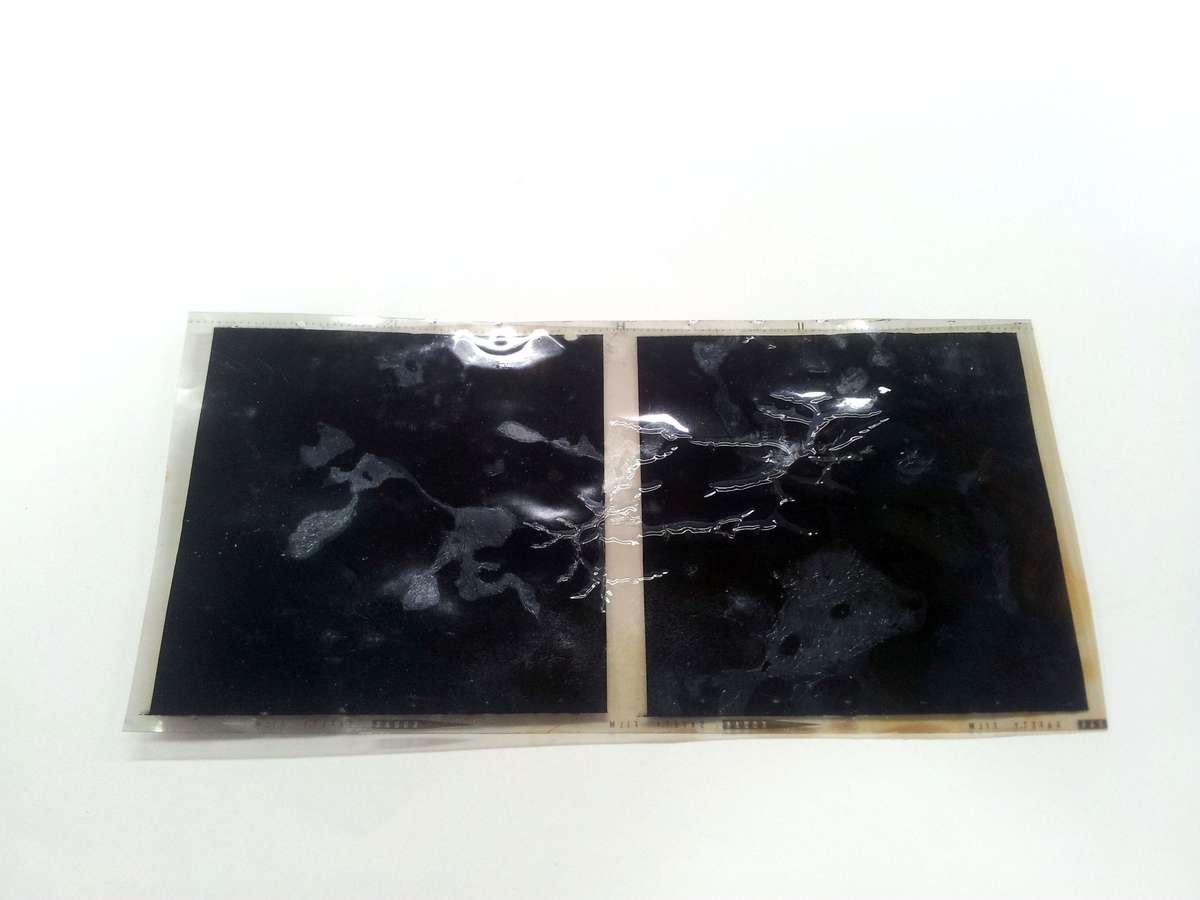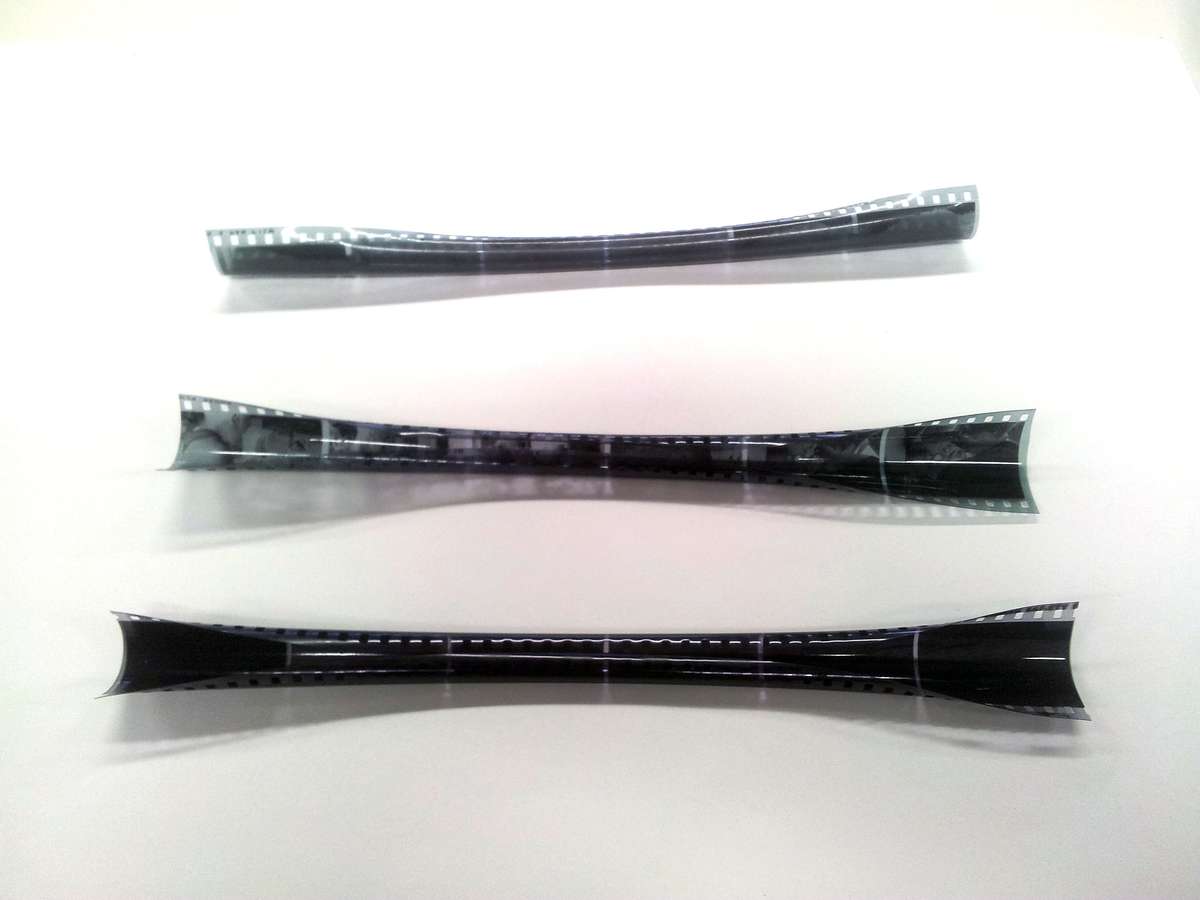
![Examples of the scanned image quality from degraded negatives. Images: © Estate of Denis George / ANMM Collection ANMS1274[615] and ANMS1273[043].](https://s3-ap-southeast-2.amazonaws.com/anmm-data/blog/2016/11/14/denis_george_cover.jpg)
Examples of the scanned image quality from degraded negatives. Images: © Estate of Denis George / ANMM Collection ANMS1274[615] and ANMS1273[043].
Our Paper Object Store is climate controlled at a constant temperature of 23°C with relative humidity at 50%. And yet, even these ideal conditions had not stopped these objects from developing an odour and a damp appearance.

An example of degrading film with farrowing and discolouration. Image: Kate Pentecost / ANMM.

Curling of the negative strips. Image: Kate Pentecost / ANMM.
The negatives came from the Denis George Collection. Denis George was a post-World War II Greek migrant who devised a new technique to artificially seed pearls, resulting in establishing a pearl cultivation industry. He adapted dental instruments to seed pearl making molluscs. These instruments and the operations of his Papua New Guinea pearl farm were documented on the affected negatives.
![ANMS1275[297]](https://s3-ap-southeast-2.amazonaws.com/anmm-data/blog/2016/11/14/anms1275297.jpg)
Denis George developed artificial pearling techniques. Image: © Estate of Denis George/ ANMM Collection ANMS1275[297].
Acetic acid is released from the film base acetate molecules, causing the vinegar like smell. As the process continues the negatives experience shrinkage, curling and brittleness. Channels called furrows, develop on the negative and crystalline deposits of the acid appear on the emulsion. Pink or blue colour casts bleed through on the coloured film stock as the gelatin layer releases its dyes.
Once the vinegar syndrome has begun it cannot be stopped or reversed. It can only be slowed and managed.
The first step is to create a digital record of the negative to preserve the information in the picture before more of it is lost through the progression of the vinegar syndrome. Creating a digital copy of the negative also means that the original doesn’t need to be handled as much, minimising the further damage to the negative.
This was done through scanning the negatives as high-resolution TIFF files. TIFF files capture a high level of picture detail and allow us to record additional descriptive information, called metadata, with the image. Some negatives were scanned using the film frames for the scanner. Curled and buckled negatives were scanned between two sheets of Perspex to gently flatten the object.
The scanned TIFF images are then adjusted in Photoshop for contrast, brightness and colour. Highly compressed JPEGS are produced for use in the collection management system and shared through our online collection.
The negatives are currently in the Conservation lab, undergoing cleaning and conservation. Shortly, they will be housed individually in non-acidic envelopes before being placed in cold storage for long term preservation.
Want to see more of Denis George’s photographs exploring his efforts to modernise pearl culturing in Australia? Why not explore our online collection.
Notes
- Images reproduced courtesy of the Estate of Denis George.
- For more information on preserving photographic collections, check out the National Archives of Australia.
![Colour casts from the release of the dyes in the film stock. Colour casts from the release of the dyes in the film stock. Image: © Estate of Denis George / ANMM Collection ANMS1275[049].](https://s3-ap-southeast-2.amazonaws.com/anmm-data/blog/2016/11/14/anms1275049.jpg)
![Channels of farrowing on a scanned negative. Channels of farrowing on a scanned negative. Image: ANMM Collection ANMS1274[698].](https://s3-ap-southeast-2.amazonaws.com/anmm-data/blog/2016/11/14/anms1274698.jpg)
![Digitising the negatives reduces the need to handle the fragile objects. Digitising the negatives reduces the need to handle the fragile objects. Image: ANMM Collection ANMS1276[041].](https://s3-ap-southeast-2.amazonaws.com/anmm-data/blog/2016/11/14/anms1276041.jpg)
![Crystalline deposits of acid on the surface of the negative. Crystalline deposits of acid on the surface of the negative. Image: AMNN Collection ANMS1276[075].](https://s3-ap-southeast-2.amazonaws.com/anmm-data/blog/2016/11/14/anms1276075.jpg)
![Crystalline deposits of acid on the surface of the negative. Denis George also pioneered the culture of pearls from Pteria penguin, a bivalve known as butterfly shell, which was not then a recognised pearl shell. Image: © Estate of Denis George / ANMM Collection ANMS1276[096].](https://s3-ap-southeast-2.amazonaws.com/anmm-data/blog/2016/11/14/anms1276096.jpg)
